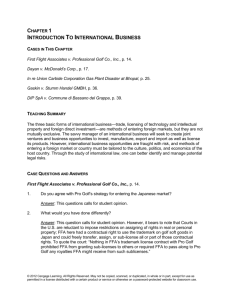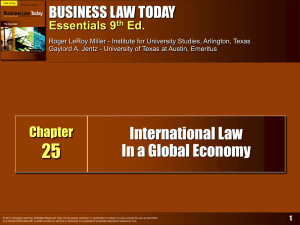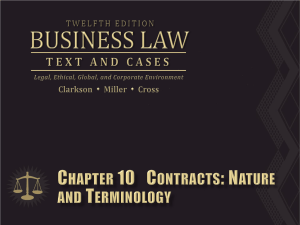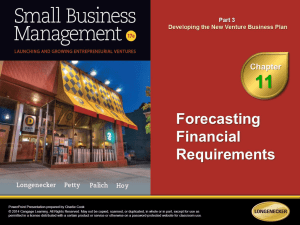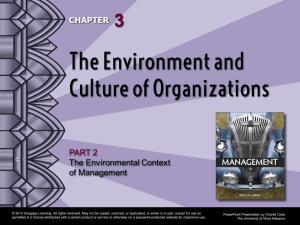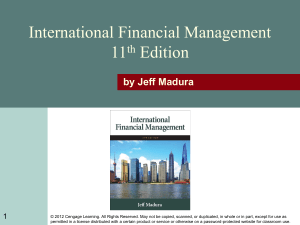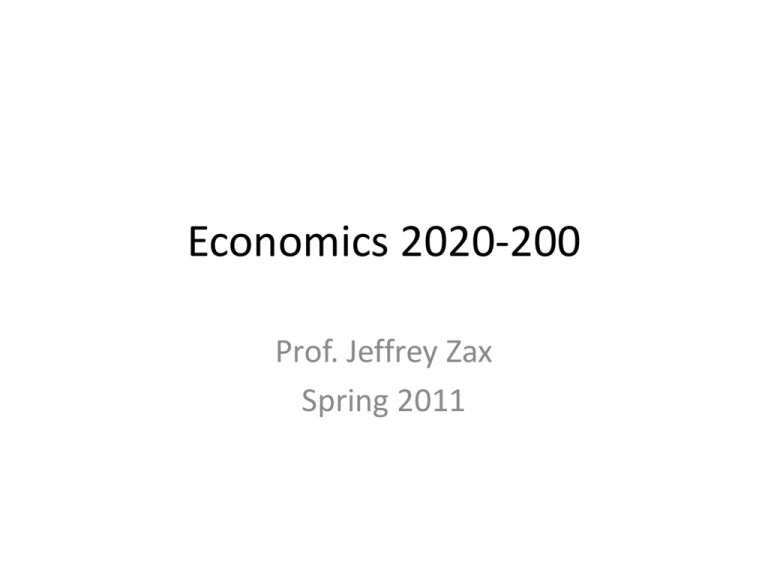
Economics 2020-200
Prof. Jeffrey Zax
Spring 2011
Objective
The purpose of this course is to acquire an
introductory understanding of macroeconomics.
Macroeconomics is the study of the structure and
performance of the entire economy. We examine
the determinants of long-run trends in the size of
the economy and of short-run fluctuations in
economic activity. As part of this examination, we
explore the causes and consequences of
inflation and unemployment. Throughout, the
effects of government policy on macroeconomic
behavior are a prominent concern.
Resources
http://www.colorado.edu/Economics/Zax/Econ20
20/spring12/webpages/econ2020.html
http://aplia.com
Schedules
This course will meet on Tuesdays and
Thursdays from 9:30 a.m. until 10:45 a.m.
throughout the semester in Math 100. I will hold
regular office hours between 1:30 p.m. and 3:30
p.m. on Tuesdays and between 11:00a.m. and
12:00p.m. on Thursdays in Economics 111, my
office. Appointments may be made for meetings
at other times, if these are inconvenient.
Performance
Final examination – 150 points
Midterm examination – 70 points
Homework – 120 points
Recitation questions – 80 points
Clicker questions – 80 points
Total – 500 points
Final grade is based on comparison between
individual performance and standards for welltrained students of this material
Last year’s grade distribution
Grade
% of class
Conventional point range
Actual point range
A
5.3%
93%-100%
72.6%-80.4%
A-
9.2%
89%-92%
68.4%-72.5%
B+
8.5%
83%-88%
66.0%-68.3%
B
13.5%
79%-82%
63.4%-65.9%
B-
12.8%
73%-78%
61.0%-63.3%
C+
17.6%
69%-72%
57.3%-60.9%
C
11.8%
63%-68%
54.2%-57.2%
C-
16.2%
59%-62%
44.6%-54.1%
D+
1.2%
53%-58%
41.3%-44.5%
D
1.9%
49%-52%
34.8%-41.2%
F
1.9%
<49%
<34.8%
Academically Adrift: Limited
Learning on College Campuses
by Richard Arum and Josipa Roksa
“According to their analysis of more than 2,300
undergraduates at twenty-four institutions, 45
percent of these students demonstrate no
significant improvement in a range of skills –
including critical thinking, complex reasoning, and
writing – during their first two years of college.”
http://www.press.uchicago.edu/ucp/books/book/chicago/A/bo10327226.html
Content
Lectures
Principles of Macroeconomics, 6th edition by N.
Gregory Mankiw
Recitations
Recitations
Elucidate, elaborate and expand on lecture and
text material
Practice problem-solving
Alternative perspective
More intimate discussion
Teaching Assistants
Tianxiao
Zheng
TEN PRINCIPLES OF ECONOMICS
9
Teaching Assistants
Nan
Xu
TEN PRINCIPLES OF ECONOMICS
10
Teaching Assistants
Nak Bum
Sung
TEN PRINCIPLES OF ECONOMICS
11
Teaching Assistants
Se Mi
Park
TEN PRINCIPLES OF ECONOMICS
12
Teaching Assistants
Soojae
Moon
TEN PRINCIPLES OF ECONOMICS
13
Teaching Assistants
Gregory
Madonia
TEN PRINCIPLES OF ECONOMICS
14
Policies
More than 2 finals on same day
Disabilities
Religious holidays
Classroom behavior
Sexual harrassmant and amorous relations
Academic integrity
All students of the University of Colorado at Boulder are
responsible for knowing and adhering to this institution’s
policy regarding academic integrity. Cheating, plagiarism,
fabrication, lying, bribery, threatening behavior and
assistance to acts of academic dishonesty are examples
of behaviors that violate this policy. Ordinarily, a student
engaged in any act of academic dishonest will receive a
failing grade for the course. In addition, all incidents of
academic misconduct shall be reported to the Honor
Code Council. Depending on its findings, students who
are found to be in violation of the academic integrity
policy will be subject to non-academic sanctions,
including but not limited to university probation,
suspension, or expulsion.
Expectations
Regular attendance
Appropriate engagement
Computers only for course-work
Your
choices
TEN PRINCIPLES OF ECONOMICS
18
Attendance
In-state tuition
first 3 credit hours = $1,209
30 lectures
Approximately $40/lecture
Out-of-state tuition
$14,425, if 15 credits than $2,885 for 3 credit
hours
30 lectures
Approximately $96/lecture
TEN PRINCIPLES OF ECONOMICS
19
Excuses
Excuses for the course requirements will be
granted only under extraordinary circumstances
It is NOT easier to ask forgiveness rather than
permission!
Deal with potential problems IN ADVANCE
No points for whining, whinging, pleading,
groveling, begging, threatening or any other
behavior other than accurate responses to
graded elements of the course
Be cautious about … 1
• Asking for repetitions of lecture material
– If it was unclear than of course it has to be
reexplained
– If you slept in, your tuition does not cover private
makeup presentations
Be cautious about … 2
• Saying “I studied REALLY HARD for this test”
– You are paid for outputs, not inputs
– Claim is unverifiable
– The reason you’re saying it is that you didn’t study
hard enough to get the grade that you wanted
Be cautious about … 3
• Saying “There wasn’t enough time!”
– There is never enough time. That’s axiomatic.
– The reason you are saying that is that you didn’t
achieve the score you wanted, which others
achieved in the same amount of time.
What do you want to say when you
finish your workout?
1. I didn’t lift a thing, just ogled
everyone else.
2. The weights were so heavy!
A friend helped me lift them.
3. I’m so pumped! I lifted for two
hours straight without a
break! I can barely lift my
arms!
What do you want to say when you
finish a test?
1. That was really
easy! I hardly
worked at all!
2. That was annoying.
Some of the
questions were
hard!
3. That was great! I
can’t believe how
hard I worked! I’m
completely
exhausted.
FYI: How to Read Your Textbook
1. Read before class.
You’ll get more out of class.
2. Summarize, don’t highlight.
Highlighting is a passive activity that won’t
improve your comprehension or retention.
Instead, summarize each section in your own
words. Then, compare your summary to the one
at the end of the chapter.
© 2012 Cengage Learning. All Rights Reserved. May not be copied, scanned, or duplicated, in whole or in part, except for use as
permitted in a license distributed with a certain product or service or otherwise on a password-protected website for classroom use.
26
FYI: How to Read Your Textbook
3. Test yourself.
Try the “Quick Quiz” that follows each section
before moving on to the next section.
Write your answers down, compare them to the
answers in the back of the book. If your answers
are incorrect, review the section before moving on.
4. Practice, practice, practice.
Work through the end-of-chapter review questions
and problems. They are often good practice for
the exams. And the more you use your new
knowledge, the more solid it will become.
© 2012 Cengage Learning. All Rights Reserved. May not be copied, scanned, or duplicated, in whole or in part, except for use as
permitted in a license distributed with a certain product or service or otherwise on a password-protected website for classroom use.
27
FYI: How to Read Your Textbook
5. Go online.
The book comes with excellent web resources,
including practice quizzes, tools to strengthen
your graphing skills, helpful video clips, and other
resources to help you learn the textbook material
more easily and effectively. Visit:
http://academic.cengage.com/economics/mankiw
6. Study in groups.
Get together with a few classmates to review each
chapter, quiz each other, and help each other
understand the material.
© 2012 Cengage Learning. All Rights Reserved. May not be copied, scanned, or duplicated, in whole or in part, except for use as
permitted in a license distributed with a certain product or service or otherwise on a password-protected website for classroom use.
28
FYI: How to Read Your Textbook
7. Teach someone.
The best way to learn something is to teach it to
someone else, such as a study partner or friend.
8. Don’t skip the real world examples.
Read the Case Studies and “In The News” boxes
in each chapter. They will help you see how the
new terms, concepts, models, and graphs apply to
the real world. As you read the newspaper or
watch the evening news, see if you can find the
connections with what you’re learning in the
textbook.
© 2012 Cengage Learning. All Rights Reserved. May not be copied, scanned, or duplicated, in whole or in part, except for use as
permitted in a license distributed with a certain product or service or otherwise on a password-protected website for classroom use.
29
Ten Principles of Economics
© 2011 Cengage Learning. All Rights Reserved. May not be copied, scanned, or duplicated, in whole or in part, except for use as
permitted in a license distributed with a certain product or service or otherwise on a password-protected website for classroom use.
30
Table 1
Ten Principles of Economics
© 2011 Cengage Learning. All Rights Reserved. May not be copied, scanned, or duplicated, in whole or in part, except for use as
permitted in a license distributed with a certain product or service or otherwise on a password-protected website for classroom use.
31
How People Make Decisions
Principle 1: People face trade-offs
Making decisions
Trade off one goal against another
Student – time
Parents – income
Society
National defense vs. consumer goods
Clean environment vs. high level of income
Efficiency vs. equality
©2012
2011
Cengage
All Rights
Reserved.
May
not be copied,
duplicated,
in whole or in part, except for use
©
Cengage
Learning.Learning.
All Rights Reserved.
May not be
copied, scanned,
or duplicated,
in whole or scanned,
in part, except or
for use
as
permitted
in a license
distributed with
a certain product
or otherwise
on aor
password-protected
website for classroom
use.
permitted
in a license
distributed
withoraservice
certain
product
service or otherwise
on a password-protected
website for classroom
as
use.
32
32
How People Make Decisions
Principle 2: The cost of something is what you give
up to get it
People face trade-offs
Make decisions
Compare cost with benefits of alternatives
Opportunity cost
Whatever must be given up to obtain one item
©2012
2011
Cengage
All Rights
Reserved.
May
not be copied,
duplicated,
in whole or in part, except for use
©
Cengage
Learning.Learning.
All Rights Reserved.
May not be
copied, scanned,
or duplicated,
in whole or scanned,
in part, except or
for use
as
permitted
in a license
distributed with
a certain product
or otherwise
on aor
password-protected
website for classroom
use.
permitted
in a license
distributed
withoraservice
certain
product
service or otherwise
on a password-protected
website for classroom
as
use.
33
33
How People Make Decisions
Principle 3: Rational people think at the margin
Rational people
Systematically & purposefully do the best they
can to achieve their objectives
Marginal benefits
Marginal costs
Take action only if:
Marginal benefits > Marginal costs
©2012
2011
Cengage
All Rights
Reserved.
May
not be copied,
duplicated,
in whole or in part, except for use
©
Cengage
Learning.Learning.
All Rights Reserved.
May not be
copied, scanned,
or duplicated,
in whole or scanned,
in part, except or
for use
as
permitted
in a license
distributed with
a certain product
or otherwise
on aor
password-protected
website for classroom
use.
permitted
in a license
distributed
withoraservice
certain
product
service or otherwise
on a password-protected
website for classroom
as
use.
34
34
How People Make Decisions
Principle 4: People respond to incentives
Incentive
Something that induces a person to act
Higher price
Buyers - consume less
Sellers - produce more
Public policy
Change costs or benefits
Change people’s behavior
©2012
2011
Cengage
All Rights
Reserved.
May
not be copied,
duplicated,
in whole or in part, except for use
©
Cengage
Learning.Learning.
All Rights Reserved.
May not be
copied, scanned,
or duplicated,
in whole or scanned,
in part, except or
for use
as
permitted
in a license
distributed with
a certain product
or otherwise
on aor
password-protected
website for classroom
use.
permitted
in a license
distributed
withoraservice
certain
product
service or otherwise
on a password-protected
website for classroom
as
use.
35
35
How People Interact
Principle 5: Trade can make everyone better off
Trade
Allows each person to specialize in the activities
he or she does best
Enjoy a greater variety of goods and services at
lower cost
©2012
2011
Cengage
All Rights
Reserved.
May
not be copied,
duplicated,
in whole or in part, except for use
©
Cengage
Learning.Learning.
All Rights Reserved.
May not be
copied, scanned,
or duplicated,
in whole or scanned,
in part, except or
for use
as
permitted
in a license
distributed with
a certain product
or otherwise
on aor
password-protected
website for classroom
use.
permitted
in a license
distributed
withoraservice
certain
product
service or otherwise
on a password-protected
website for classroom
as
use.
36
36
How People Interact
Principle 6: Markets are usually a good way to
organize economic activity
Adam Smith’s “invisible hand”
Households and firms interacting in markets
Act as if they are guided by an “invisible hand”
Leads them to desirable market outcomes
Corollary: Government intervention
Prevents the invisible hand’s ability to coordinate
the decisions of the households and firms that
make up the economy
©2012
2011
Cengage
All Rights
Reserved.
May
not be copied,
duplicated,
in whole or in part, except for use
©
Cengage
Learning.Learning.
All Rights Reserved.
May not be
copied, scanned,
or duplicated,
in whole or scanned,
in part, except or
for use
as
permitted
in a license
distributed with
a certain product
or otherwise
on aor
password-protected
website for classroom
use.
permitted
in a license
distributed
withoraservice
certain
product
service or otherwise
on a password-protected
website for classroom
as
use.
37
37
How People Interact
Principle 7: Governments can sometimes improve
market outcomes
We need government
Enforce rules and maintain institutions
Enforce property rights
Promote efficiency
Avoid market failure
Limit market power
Internalize externalities
Promote equality (?)
Avoid disparities in economic wellbeing
©2012
2011
Cengage
All Rights
Reserved.
May
not be copied,
duplicated,
in whole or in part, except for use
©
Cengage
Learning.Learning.
All Rights Reserved.
May not be
copied, scanned,
or duplicated,
in whole or scanned,
in part, except or
for use
as
permitted
in a license
distributed with
a certain product
or otherwise
on aor
password-protected
website for classroom
use.
permitted
in a license
distributed
withoraservice
certain
product
service or otherwise
on a password-protected
website for classroom
as
use.
38
38
How the Economy as a Whole Works
Principle 8: A country’s standard of living depends
on its ability to produce goods and services
Large differences in living standards
Among countries
Over time
Explanation: differences in productivity
©2012
2011
Cengage
All Rights
Reserved.
May
not be copied,
duplicated,
in whole or in part, except for use
©
Cengage
Learning.Learning.
All Rights Reserved.
May not be
copied, scanned,
or duplicated,
in whole or scanned,
in part, except or
for use
as
permitted
in a license
distributed with
a certain product
or otherwise
on aor
password-protected
website for classroom
use.
permitted
in a license
distributed
withoraservice
certain
product
service or otherwise
on a password-protected
website for classroom
as
use.
39
39
How the Economy as a Whole Works
Principle 9: Prices rise when the government prints
too much money
Inflation
An increase in the overall level of prices in the
economy
Causes for large / persistent inflation
Growth in quantity of money
Value of money falls
©2012
2011
Cengage
All Rights
Reserved.
May
not be copied,
duplicated,
in whole or in part, except for use
©
Cengage
Learning.Learning.
All Rights Reserved.
May not be
copied, scanned,
or duplicated,
in whole or scanned,
in part, except or
for use
as
permitted
in a license
distributed with
a certain product
or otherwise
on aor
password-protected
website for classroom
use.
permitted
in a license
distributed
withoraservice
certain
product
service or otherwise
on a password-protected
website for classroom
as
use.
40
40
How the Economy as a Whole Works
Principle 10: Society faces a short-run trade-off
between inflation and unemployment
Short-run effects of monetary injections:
Stimulates the overall level of spending
Higher demand for goods and services
Firms – raise prices; hire more workers;
produce more goods and services
Lower unemployment
©2012
2011
Cengage
All Rights
Reserved.
May
not be copied,
duplicated,
in whole or in part, except for use
©
Cengage
Learning.Learning.
All Rights Reserved.
May not be
copied, scanned,
or duplicated,
in whole or scanned,
in part, except or
for use
as
permitted
in a license
distributed with
a certain product
or otherwise
on aor
password-protected
website for classroom
use.
permitted
in a license
distributed
withoraservice
certain
product
service or otherwise
on a password-protected
website for classroom
as
use.
41
41
Thinking Like an Economist
PowerPoint Slides prepared by:
Andreea CHIRITESCU
Eastern Illinois University
© 2011 Cengage Learning. All Rights Reserved. May not be copied, scanned, or duplicated, in whole or in part, except for use as
permitted in a license distributed with a certain product or service or otherwise on a password-protected website for classroom use.
42
The Economist as Policy Advisor
As scientists, economists make
positive statements,
which attempt to describe the world as it is.
As policy advisors, economists make
normative statements,
which attempt to prescribe how the world should be.
Positive statements can be confirmed or refuted,
normative statements cannot.
Govt employs many economists for policy advice.
E.g., the U.S. President has a Council of Economic
Advisors, which the author of this textbook chaired
from 2003 to 2005.
© 2012 Cengage Learning. All Rights Reserved. May not be copied, scanned, or duplicated, in whole or in part, except for use as
permitted in a license distributed with a certain product or service or otherwise on a password-protected website for classroom use.
43
ACTIVE LEARNING
3
Identifying positive vs. normative
Which of these statements are “positive” and which
are “normative”? How can you tell the difference?
a. Prices rise when the government increases the
quantity of money.
b. The government should print less money.
c. A tax cut is needed to stimulate the economy.
d. An increase in the price of burritos will cause an
increase in consumer demand for music
downloads.
© 2012 ©
Cengage
2012 Cengage
Learning.
Learning.
All Rights
AllReserved.
Rights Reserved.
May notMay
be copied,
not be copied,
scanned,scanned,
or duplicated,
or duplicated,
in wholeinorwhole
in part,
or in
except
part,for
except
use as
for use as
permitted
permitted
in a license
in a distributed
license distributed
with a certain
with a product
certain product
or service
or or
service
otherwise
or otherwise
on a password-protected
on a password-protected
website website
for classroom
for classroom
use.
use.
44
ACTIVE LEARNING
Answers
3
a. Prices rise when the government increases the
quantity of money.
Positive – describes a relationship, could use
data to confirm or refute.
b. The government should print less money.
Normative – this is a value judgment, cannot be
confirmed or refuted.
© 2012 ©
Cengage
2012 Cengage
Learning.
Learning.
All Rights
AllReserved.
Rights Reserved.
May notMay
be copied,
not be copied,
scanned,scanned,
or duplicated,
or duplicated,
in wholeinorwhole
in part,
or in
except
part,for
except
use as
for use as
permitted
permitted
in a license
in a distributed
license distributed
with a certain
with a product
certain product
or service
or or
service
otherwise
or otherwise
on a password-protected
on a password-protected
website website
for classroom
for classroom
use.
use.
45
ACTIVE LEARNING
Answers
3
c. A tax cut is needed to stimulate the economy.
Normative – another value judgment.
d. An increase in the price of burritos will cause an
increase in consumer demand for music
downloads.
Positive – describes a relationship.
Note that a statement need not be true to be
positive.
© 2012 ©
Cengage
2012 Cengage
Learning.
Learning.
All Rights
AllReserved.
Rights Reserved.
May notMay
be copied,
not be copied,
scanned,scanned,
or duplicated,
or duplicated,
in wholeinorwhole
in part,
or in
except
part,for
except
use as
for use as
permitted
permitted
in a license
in a distributed
license distributed
with a certain
with a product
certain product
or service
or or
service
otherwise
or otherwise
on a password-protected
on a password-protected
website website
for classroom
for classroom
use.
use.
46
Interdependence and
the Gains from Trade
PowerPoint Slides prepared by:
Andreea CHIRITESCU
Eastern Illinois University
© 2011 Cengage Learning. All Rights Reserved. May not be copied, scanned, or duplicated, in whole or in part, except for use as
permitted in a license distributed with a certain product or service or otherwise on a password-protected website for classroom use.
47
Comparative Advantage
Absolute advantage
Produce a good using fewer inputs than another
producer
Opportunity cost
Whatever must be given up to obtain some item
Measures the trade-off between the two goods
that each producer faces
©2012
2011
Cengage
All Rights
Reserved.
May
not be copied,
duplicated,
in whole or in part, except for use
©
Cengage
Learning.Learning.
All Rights Reserved.
May not be
copied, scanned,
or duplicated,
in whole or scanned,
in part, except or
for use
as
permitted
in a license
distributed with
a certain product
or otherwise
on aor
password-protected
website for classroom
use.
permitted
in a license
distributed
withoraservice
certain
product
service or otherwise
on a password-protected
website for classroom
as
use.
48
48
Table 1
The Opportunity Cost of Meat and Potatoes
© 2011 Cengage Learning. All Rights Reserved. May not be copied, scanned, or duplicated, in whole or in part, except for use as
permitted in a license distributed with a certain product or service or otherwise on a password-protected website for classroom use.
49
Comparative Advantage
Comparative advantage
Produce a good at a lower opportunity cost than
another producer
Reflects the relative opportunity cost
Principle of comparative advantage
Each good - produced by the individual that has
the smaller opportunity cost of producing that
good
©2012
2011
Cengage
All Rights
Reserved.
May
not be copied,
duplicated,
in whole or in part, except for use
©
Cengage
Learning.Learning.
All Rights Reserved.
May not be
copied, scanned,
or duplicated,
in whole or scanned,
in part, except or
for use
as
permitted
in a license
distributed with
a certain product
or otherwise
on aor
password-protected
website for classroom
use.
permitted
in a license
distributed
withoraservice
certain
product
service or otherwise
on a password-protected
website for classroom
as
use.
50
50
Comparative Advantage
One person
Can have absolute advantage in both goods
Cannot have comparative advantage in both
goods
For different opportunity costs
One person - comparative advantage in one
good
The other person - comparative advantage in
the other good
©2012
2011
Cengage
All Rights
Reserved.
May
not be copied,
duplicated,
in whole or in part, except for use
©
Cengage
Learning.Learning.
All Rights Reserved.
May not be
copied, scanned,
or duplicated,
in whole or scanned,
in part, except or
for use
as
permitted
in a license
distributed with
a certain product
or otherwise
on aor
password-protected
website for classroom
use.
permitted
in a license
distributed
withoraservice
certain
product
service or otherwise
on a password-protected
website for classroom
as
use.
51
51
Table 1
Comparative and absolute advantage
Absolute advantage
Farmer
Rancher
Time needed to produce:
1 oz of Meat
1 oz of Potatoes
60 minutes
15 minutes
20 minutes
10 minute
© 2011 Cengage Learning. All Rights Reserved. May not be copied, scanned, or duplicated, in whole or in part, except for use as
permitted in a license distributed with a certain product or service or otherwise on a password-protected website for classroom use.
52
The Market Forces of
Supply and Demand
PowerPoint Slides prepared by:
Andreea CHIRITESCU
Eastern Illinois University
© 2011 Cengage Learning. All Rights Reserved. May not be copied, scanned, or duplicated, in whole or in part, except for use as
permitted in a license distributed with a certain product or service or otherwise on a password-protected website for classroom use.
53
Figure 8
The Equilibrium of Supply and Demand
Price of
Ice-Cream
Cones
Equilibrium
Supply
$3.00
Equilibrium
price
2.50
2.00
Equilibrium
quantity
1.50
1.00
Demand
0.50
0
1 2 3 4 5 6 7 8 9 10 11 12
Quantity of Ice-Cream Cones
The equilibrium is found where the supply and demand curves intersect. At the
equilibrium price, the quantity supplied equals the quantity demanded. Here the
equilibrium price is $2.00: At this price, 7 ice-cream cones are supplied, and 7 icecream cones are demanded.
© 2011 Cengage Learning. All Rights Reserved. May not be copied, scanned, or duplicated, in whole or in part, except for use as
permitted in a license distributed with a certain product or service or otherwise on a password-protected website for classroom use.
54
Figure 10
How an increase in demand affects the equilibrium
Price of
Ice-Cream
Cones
1. Hot weather increases the
demand for ice cream . . .
Supply
2. …resulting in
a higher price . . .
New equilibrium
$2.50
Initial equilibrium
2.00
3. …and a higher
quantity sold.
D1
0
7
10
D2
Quantity of Ice-Cream Cones
An event that raises quantity demanded at any given price shifts the demand curve to the right.
The equilibrium price and the equilibrium quantity both rise. Here an abnormally hot summer
causes buyers to demand more ice cream. The demand curve shifts from D1 to D2, which causes
the equilibrium price to rise from $2.00 to $2.50 and the equilibrium quantity to rise from 7 to 10
cones.
© 2011 Cengage Learning. All Rights Reserved. May not be copied, scanned, or duplicated, in whole or in part, except for use as
permitted in a license distributed with a certain product or service or otherwise on a password-protected website for classroom use.
55
Figure 11
How a Decrease in Supply Affects the Equilibrium
Price of
Ice-Cream
Cones
1. An increase in the price of sugar reduces
the supply of ice cream . . .
New equilibrium
2. …resulting in
a higher price . . .
S2
S1
$2.50
2.00
Initial equilibrium
3. …and a smaller
quantity sold.
Demand
0
4
7 Quantity of Ice-Cream Cones
An event that reduces quantity supplied at any given price shifts the supply curve to the left.
The equilibrium price rises, and the equilibrium quantity falls. Here an increase in the price of
sugar (an input) causes sellers to supply less ice cream. The supply curve shifts from S 1 to S2,
which causes the equilibrium price of ice cream to rise from $2.00 to $2.50 and the equilibrium
quantity to fall from 7 to 4 cones.
© 2011 Cengage Learning. All Rights Reserved. May not be copied, scanned, or duplicated, in whole or in part, except for use as
permitted in a license distributed with a certain product or service or otherwise on a password-protected website for classroom use.
56
Elasticity and Its Application
PowerPoint Slides prepared by:
Andreea CHIRITESCU
Eastern Illinois University
© 2011 Cengage Learning. All Rights Reserved. May not be copied, scanned, or duplicated, in whole or in part, except for use as
permitted in a license distributed with a certain product or service or otherwise on a password-protected website for classroom use.
57
The Elasticity of Demand
Computing the price elasticity of demand
Percentage change in quantity demanded
divided by percentage change in price
Use absolute value (drop the minus sign)
Midpoint method
Two points: (Q1, P1) and (Q2, P2)
(Q2 Q1 )/[(Q2 Q1 )/ 2 ]
Price elasticity of demand
(P2 P1 )/[(P2 P1 )/ 2 ]
©2012
2011
Cengage
All Rights
Reserved.
May
not be copied,
duplicated,
in whole or in part, except for use
©
Cengage
Learning.Learning.
All Rights Reserved.
May not be
copied, scanned,
or duplicated,
in whole or scanned,
in part, except or
for use
as
permitted
in a license
distributed with
a certain product
or otherwise
on aor
password-protected
website for classroom
use.
permitted
in a license
distributed
withoraservice
certain
product
service or otherwise
on a password-protected
website for classroom
as
use.
58
58
©2012
2011
Cengage
All Rights
Reserved.
May
not be copied,
duplicated,
in whole or in part, except for use
©
Cengage
Learning.Learning.
All Rights Reserved.
May not be
copied, scanned,
or duplicated,
in whole or scanned,
in part, except or
for use
as
permitted
in a license
distributed with
a certain product
or otherwise
on aor
password-protected
website for classroom
use.
permitted
in a license
distributed
withoraservice
certain
product
service or otherwise
on a password-protected
website for classroom
as
use.
59
59
©2012
2011
Cengage
All Rights
Reserved.
May
not be copied,
duplicated,
in whole or in part, except for use
©
Cengage
Learning.Learning.
All Rights Reserved.
May not be
copied, scanned,
or duplicated,
in whole or scanned,
in part, except or
for use
as
permitted
in a license
distributed with
a certain product
or otherwise
on aor
password-protected
website for classroom
use.
permitted
in a license
distributed
withoraservice
certain
product
service or otherwise
on a password-protected
website for classroom
as
use.
60
60
©2012
2011
Cengage
All Rights
Reserved.
May
not be copied,
duplicated,
in whole or in part, except for use
©
Cengage
Learning.Learning.
All Rights Reserved.
May not be
copied, scanned,
or duplicated,
in whole or scanned,
in part, except or
for use
as
permitted
in a license
distributed with
a certain product
or otherwise
on aor
password-protected
website for classroom
use.
permitted
in a license
distributed
withoraservice
certain
product
service or otherwise
on a password-protected
website for classroom
as
use.
61
61
Supply, Demand,
and Government Policies
PowerPoint Slides prepared by:
Andreea CHIRITESCU
Eastern Illinois University
© 2011 Cengage Learning. All Rights Reserved. May not be copied, scanned, or duplicated, in whole or in part, except for use as
permitted in a license distributed with a certain product or service or otherwise on a password-protected website for classroom use.
62
©2012
2011
Cengage
All Rights
Reserved.
May
not be copied,
duplicated,
in whole or in part, except for use
©
Cengage
Learning.Learning.
All Rights Reserved.
May not be
copied, scanned,
or duplicated,
in whole or scanned,
in part, except or
for use
as
permitted
in a license
distributed with
a certain product
or otherwise
on aor
password-protected
website for classroom
use.
permitted
in a license
distributed
withoraservice
certain
product
service or otherwise
on a password-protected
website for classroom
as
use.
63
63
©2012
2011
Cengage
All Rights
Reserved.
May
not be copied,
duplicated,
in whole or in part, except for use
©
Cengage
Learning.Learning.
All Rights Reserved.
May not be
copied, scanned,
or duplicated,
in whole or scanned,
in part, except or
for use
as
permitted
in a license
distributed with
a certain product
or otherwise
on aor
password-protected
website for classroom
use.
permitted
in a license
distributed
withoraservice
certain
product
service or otherwise
on a password-protected
website for classroom
as
use.
64
64
©2012
2011
Cengage
All Rights
Reserved.
May
not be copied,
duplicated,
in whole or in part, except for use
©
Cengage
Learning.Learning.
All Rights Reserved.
May not be
copied, scanned,
or duplicated,
in whole or scanned,
in part, except or
for use
as
permitted
in a license
distributed with
a certain product
or otherwise
on aor
password-protected
website for classroom
use.
permitted
in a license
distributed
withoraservice
certain
product
service or otherwise
on a password-protected
website for classroom
as
use.
65
65
©2012
2011
Cengage
All Rights
Reserved.
May
not be copied,
duplicated,
in whole or in part, except for use
©
Cengage
Learning.Learning.
All Rights Reserved.
May not be
copied, scanned,
or duplicated,
in whole or scanned,
in part, except or
for use
as
permitted
in a license
distributed with
a certain product
or otherwise
on aor
password-protected
website for classroom
use.
permitted
in a license
distributed
withoraservice
certain
product
service or otherwise
on a password-protected
website for classroom
as
use.
66
66
©2012
2011
Cengage
All Rights
Reserved.
May
not be copied,
duplicated,
in whole or in part, except for use
©
Cengage
Learning.Learning.
All Rights Reserved.
May not be
copied, scanned,
or duplicated,
in whole or scanned,
in part, except or
for use
as
permitted
in a license
distributed with
a certain product
or otherwise
on aor
password-protected
website for classroom
use.
permitted
in a license
distributed
withoraservice
certain
product
service or otherwise
on a password-protected
website for classroom
as
use.
67
67
Consumers, Producers,
and the Efficiency of Markets
PowerPoint Slides prepared by:
Andreea CHIRITESCU
Eastern Illinois University
© 2011 Cengage Learning. All Rights Reserved. May not be copied, scanned, or duplicated, in whole or in part, except for use as
permitted in a license distributed with a certain product or service or otherwise on a password-protected website for classroom use.
68
©2012
2011
Cengage
All Rights
Reserved.
May
not be copied,
duplicated,
in whole or in part, except for use
©
Cengage
Learning.Learning.
All Rights Reserved.
May not be
copied, scanned,
or duplicated,
in whole or scanned,
in part, except or
for use
as
permitted
in a license
distributed with
a certain product
or otherwise
on aor
password-protected
website for classroom
use.
permitted
in a license
distributed
withoraservice
certain
product
service or otherwise
on a password-protected
website for classroom
as
use.
69
69
©2012
2011
Cengage
All Rights
Reserved.
May
not be copied,
duplicated,
in whole or in part, except for use
©
Cengage
Learning.Learning.
All Rights Reserved.
May not be
copied, scanned,
or duplicated,
in whole or scanned,
in part, except or
for use
as
permitted
in a license
distributed with
a certain product
or otherwise
on aor
password-protected
website for classroom
use.
permitted
in a license
distributed
withoraservice
certain
product
service or otherwise
on a password-protected
website for classroom
as
use.
70
70
©2012
2011
Cengage
All Rights
Reserved.
May
not be copied,
duplicated,
in whole or in part, except for use
©
Cengage
Learning.Learning.
All Rights Reserved.
May not be
copied, scanned,
or duplicated,
in whole or scanned,
in part, except or
for use
as
permitted
in a license
distributed with
a certain product
or otherwise
on aor
password-protected
website for classroom
use.
permitted
in a license
distributed
withoraservice
certain
product
service or otherwise
on a password-protected
website for classroom
as
use.
71
71
©2012
2011
Cengage
All Rights
Reserved.
May
not be copied,
duplicated,
in whole or in part, except for use
©
Cengage
Learning.Learning.
All Rights Reserved.
May not be
copied, scanned,
or duplicated,
in whole or scanned,
in part, except or
for use
as
permitted
in a license
distributed with
a certain product
or otherwise
on aor
password-protected
website for classroom
use.
permitted
in a license
distributed
withoraservice
certain
product
service or otherwise
on a password-protected
website for classroom
as
use.
72
72
Application:
The Costs of Taxation
PowerPoint Slides prepared by:
Andreea CHIRITESCU
Eastern Illinois University
© 2011 Cengage Learning. All Rights Reserved. May not be copied, scanned, or duplicated, in whole or in part, except for use as
permitted in a license distributed with a certain product or service or otherwise on a password-protected website for classroom use.
73
©2012
2011
Cengage
All Rights
Reserved.
May
not be copied,
duplicated,
in whole or in part, except for use
©
Cengage
Learning.Learning.
All Rights Reserved.
May not be
copied, scanned,
or duplicated,
in whole or scanned,
in part, except or
for use
as
permitted
in a license
distributed with
a certain product
or otherwise
on aor
password-protected
website for classroom
use.
permitted
in a license
distributed
withoraservice
certain
product
service or otherwise
on a password-protected
website for classroom
as
use.
74
74
©2012
2011
Cengage
All Rights
Reserved.
May
not be copied,
duplicated,
in whole or in part, except for use
©
Cengage
Learning.Learning.
All Rights Reserved.
May not be
copied, scanned,
or duplicated,
in whole or scanned,
in part, except or
for use
as
permitted
in a license
distributed with
a certain product
or otherwise
on aor
password-protected
website for classroom
use.
permitted
in a license
distributed
withoraservice
certain
product
service or otherwise
on a password-protected
website for classroom
as
use.
75
75
©2012
2011
Cengage
All Rights
Reserved.
May
not be copied,
duplicated,
in whole or in part, except for use
©
Cengage
Learning.Learning.
All Rights Reserved.
May not be
copied, scanned,
or duplicated,
in whole or scanned,
in part, except or
for use
as
permitted
in a license
distributed with
a certain product
or otherwise
on aor
password-protected
website for classroom
use.
permitted
in a license
distributed
withoraservice
certain
product
service or otherwise
on a password-protected
website for classroom
as
use.
76
76



